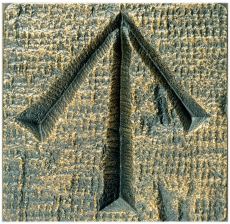Convict Development of the Hunter Valley
Lt John Shortland visited the Hunter River in 1798 while pursuing escaped convicts. He saw the coal seams at the mouth of “a very fine coal river which I named after Governor Hunter”. In 1804 34 convicts involved in an uprising at Castle Hill were banished to Newcastle where a permanent penal settlement was established for convicts who had committed a colonial crime. Convicts were put to work mining coal, timber-getting, and making lime. By 1819 there were 850 convicts working in Newcastle.
Gangs of convicts based in Newcastle were sent up the Hunter River to cut timber near where the towns of Morpeth and Maitland were later established. A couple of overseers and a gang of about 30 convicts were expected to fell between 100 and 150 large trees each month, form them into rafts, and float them back down the river to the lumber yard. Red cedar and rosewood were the most prized timbers.
Governor Macquarie believed in rewarding good behaviour, so he allowed a few trusted convicts to establish farms near Wallis Plains (now Maitland), the head of navigation of the river. Some emancipated settlers also began to move in, and by 1820 over 20 farms had been established. A small military detachment was based at Maitland to protect these farmers.
In 1822 the penal settlement was moved from Newcastle to Port Macquarie and the Hunter Valley was opened up for settlement. Other enterprises developed, with convict labour being assigned to private companies and individuals rather than working directly for the government. The Australian Agricultural Company relied on convict labour to develop its coal mines close to the settlement at Newcastle.
In the upper Hunter Valley large land grants were available to the many free settlers who were arriving from England. Armed with sufficient capital to develop substantial farming enterprises, they relied on the ongoing transportation of convicts to provide labour to run their estates.
Gangs of convicts based in Newcastle were sent up the Hunter River to cut timber near where the towns of Morpeth and Maitland were later established. A couple of overseers and a gang of about 30 convicts were expected to fell between 100 and 150 large trees each month, form them into rafts, and float them back down the river to the lumber yard. Red cedar and rosewood were the most prized timbers.
Governor Macquarie believed in rewarding good behaviour, so he allowed a few trusted convicts to establish farms near Wallis Plains (now Maitland), the head of navigation of the river. Some emancipated settlers also began to move in, and by 1820 over 20 farms had been established. A small military detachment was based at Maitland to protect these farmers.
In 1822 the penal settlement was moved from Newcastle to Port Macquarie and the Hunter Valley was opened up for settlement. Other enterprises developed, with convict labour being assigned to private companies and individuals rather than working directly for the government. The Australian Agricultural Company relied on convict labour to develop its coal mines close to the settlement at Newcastle.
In the upper Hunter Valley large land grants were available to the many free settlers who were arriving from England. Armed with sufficient capital to develop substantial farming enterprises, they relied on the ongoing transportation of convicts to provide labour to run their estates.

